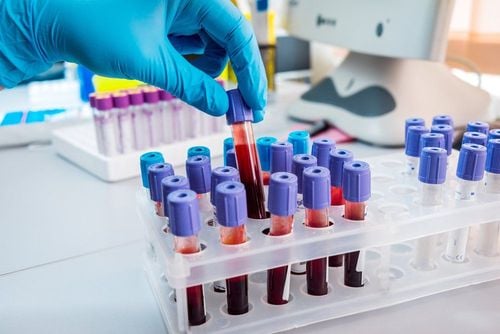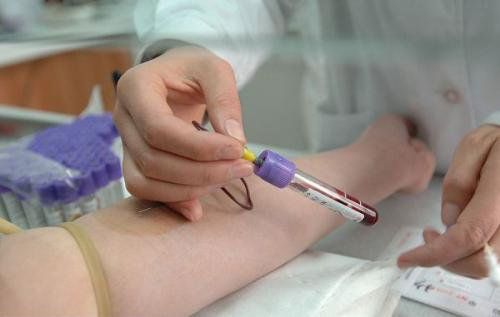This is an automatically translated article.
Liver fluke is a very common disease in many localities of our country. When there are signs of the disease, especially when living in an area with a high prevalence of fascioliasis in humans, the patient should go to medical facilities that specialize in parasitology to test for liver flukes.
1. Where do liver flukes live?
Human fascioliasis includes fascioliasis and fascioliasis. This is a very common disease in many provinces of our country. According to statistics of the Central Institute of Hygiene and Epidemiology, fascioliasis is distributed in at least 21 cities and provinces, in which some areas have high prevalence such as Ninh Binh, Nam Dinh, Binh Dinh, and Phu Yen. . The liver fluke disease is distributed in at least 47 provinces and cities, of which the highest infection rate belongs to some central provinces and the Central Highlands such as Da Nang, Quang Nam, Binh Dinh, Phu Yen, Khanh Hoa, and Gia Lai.
Human trematodes are not transmitted directly from an infected person to a healthy person. People with small liver flukes often eat fish salad or other dishes from fish containing larval cysts that have not been fully cooked. While, people with liver fluke disease when eating vegetables that grow under water such as watercress, celery, water spinach, cilantro, lotus root, ... containing cysts or by drinking cold water containing tapeworm larvae .

Món gỏi cá có nguy cơ gây bệnh sán lá gan nhỏ
Where does the liver fluke parasitize after entering the body? After entering the stomach and duodenum, the liver fluke larvae will self-develop and release. The larvae of the fluke will penetrate the duodenal wall into the peritoneal cavity to the liver, they perforate the liver capsule, invade the liver parenchyma. In addition to liver parenchyma, liver flukes can migrate to other organs such as intestinal wall, stomach wall, abdominal wall, breast, joint capsule,... After penetrating the liver parenchyma, Liver flukes can enter the bile ducts and lay eggs. Eggs will be excreted with feces into the environment, if eggs fall into the water, they will develop into larvae, parasitize hosts such as snails, fish, aquatic plants, ... and can continue to penetrate into the environment. human body. During the parasite's time in the human body, if not detected and treated promptly, liver flukes will cause many serious injuries such as cirrhosis, damage to the biliary epithelium, biliary obstruction, and possibly even cause liver failure. cholangiocarcinoma.
2. Tests for human liver fluke
Liver fluke disease in humans usually has symptoms such as digestive disorders, loss of appetite, nausea, weight loss, anemia, liver pain, edema, sometimes jaundice, erratic fever (fever). high fever, chills or transient fever that goes away on its own, sometimes with a prolonged fever), signs of chronic bile duct inflammation, complications of bile duct bleeding,...
When there are symptoms as above, especially when If you have a history of eating fish salad, drinking cold water, often eating raw aquatic vegetables, or living in areas with a high incidence of the disease, the patient should go to a medical facility with a specialist in parasitology for examination. liver fluke test. Tests for liver flukes commonly performed are:
Stool test for eggs: this is a useful and specific test, but its accuracy depends on many factors, especially disease progression time. If tested in the first 3-4 weeks after infection with fascioliasis, it is difficult to detect eggs in feces. The time of egg excretion is very erratic, in practice, eggs are only tested in the stool after 3-4 months after eating food containing larvae. In addition, because humans are accidental hosts, the fluke doesn't always develop completely and the eggs are eliminated as in cattle. If the fluke is ectopic, it will never have eggs in the stool, unless the fluke is parasitic in many places in the body, including in liver tissue and bile ducts.

Kỹ thuật xét nghiện tìm trứng sán
Blood chemistry and complete hematology tests: During the larval stage of invasion, the white blood cell count is always greater than 10,000/mm3, in many cases the white blood cell increases to 30,000/mm3. In most cases, eosinophils are elevated, accounting for more than 5% of the total white blood cells, in some cases eosinophils are elevated above 80% (under normal health conditions, eosinophils account for only 1-3%). Aspiration of duodenal fluid - bile through a flexible endoscope to find eggs of fluke: After aspiration, duodenal fluid will be examined under a microscope to find eggs of liver fluke. When the results of clinical examination, ultrasound and ELISA test are not consistent, duodenal - bile aspiration to find eggs of liver fluke is a necessary test, giving accurate results. Immunoassay (ELISA) blood test for liver fluke antibodies in the patient's serum. This is a widely used test, giving reliable diagnostic results, helping not to miss cases that need treatment. The diagnostic serological test gives early results, even at the infiltrative stage, before the formation of lesions on ultrasound.
To diagnose liver fluke disease in humans, in addition to liver fluke tests, the doctor can assign patients to perform some imaging techniques to help detect liver flukes such as general ultrasound of the area. hepatobiliary, chest X-ray, tomography, magnetic resonance imaging,... to determine the extent of liver and biliary damage. Occasionally, with imaging techniques, adult liver flukes can be seen in the common bile duct, gallbladder, or sandwiched in the liver parenchyma.
Human liver fluke disease, although there is no vaccine to prevent, but there is treatment. When diagnosed with liver fluke, depending on the type of liver fluke, the patient will be treated according to the appropriate regimen. If treated early, the treatment is usually favorable, the patient usually responds to the drug and recovers completely. If the disease is detected and treated slowly, the liver fluke lesions that cause the patient's body will be more severe, the treatment more difficult and complicated.

Hiện nay chưa có vắc-xin phòng bệnh sán lá gan ở người
3. Prevention of human liver fluke disease
To prevent liver fluke disease in humans, it is necessary to thoroughly eat cooked and boiled water. Do not eat fish salad and fish dishes that have not been fully cooked. Vegetables that grow under water such as coriander, celery, watercress, water spinach, ... need to be cooked before eating. Limit the consumption of these vegetables raw, because even if you wash them thoroughly, it is difficult to remove all the cysts on the vegetables. Wash hands often, especially before
In addition, it is necessary to maintain environmental hygiene to cut off the life cycle of liver flukes. Manage human and animal feces well, do not let manure fall into water sources, do not use fresh manure to feed fish or fertilize vegetables.
Customers who want to examine and treat small liver fluke disease at Vinmec can directly go to Vinmec Health System nationwide or contact to book an online appointment HERE.
SEE ALSO:
Liver fluke disease: Causes, symptoms and ways to prevent Liver fluke disease cured after only 3 days of treatment at Vinmec Central Park International Hospital How to recognize a helminth infection Recommended video :
Vinmec successfully treated cirrhosis by stem cell transplant













